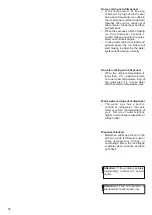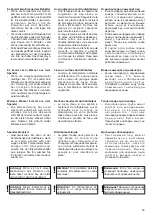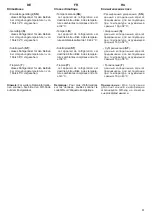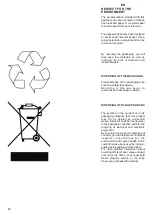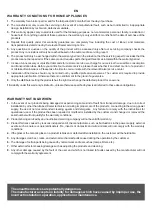
50
EN
WHAT TO DO IF?
Every damage:
•
Disconnect from the power supply,
• Announce the need for repair
(service center or another organisa-
tion which has the corresponding
rights).
A few simple defects can be removed
by the user, corresponding to the
advices in this operating instruction.
Problems and mistakes can happen
during the usage of the unit. Some
minor defects the user can remove on
his or her own through following the
advices mentioned in the table below.
Before contacting the customer service
the following points are to be checked
consecutively:
•
When switching the refrigerator on or
off, it may produce a clicking sound –
this is normal.
•
When the refrigerator is on, it may
produce creaking sounds, especially
when the door is opened. This sound
is caused by the expansion of the
cooling liquid inside the refrigerator.
This is not a sign of a problem.
•
Noise and rattling sounds may be
produced when closing the door
because of the seal. This is the result
of the sudden cooling of air inside.
•
The compressor may make noise or
pulsating sounds. This is character-
istic for modern compressors that
operate at higher speeds than earlier
models.
•
The compression and expansion of
the internal components caused by a
drop in temperature may cause quiet
rattling sounds inside the refrigera-
tor.
•
Increased temperature near the door
and on each side of the refrigerator is
normal. Heat prevents formation of
moisture.
•
A somewhat higher temperature
behind the refrigerator is normal as
this is where cooling liquid flows at
high temperatures. Avoid contacting
this part of the refrigerator.
•
After the refrigerator has been
switched on, it takes a few minutes
for the compartments to cool: If the
temperature of a compartment is
higher when the refrigerator is
switched on, it will take a few more























